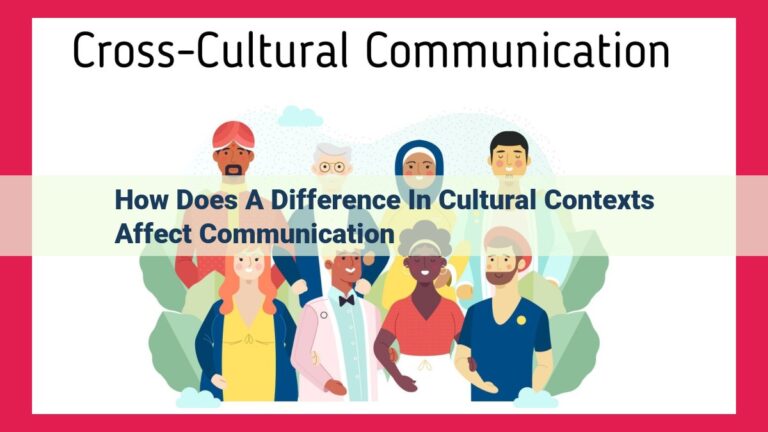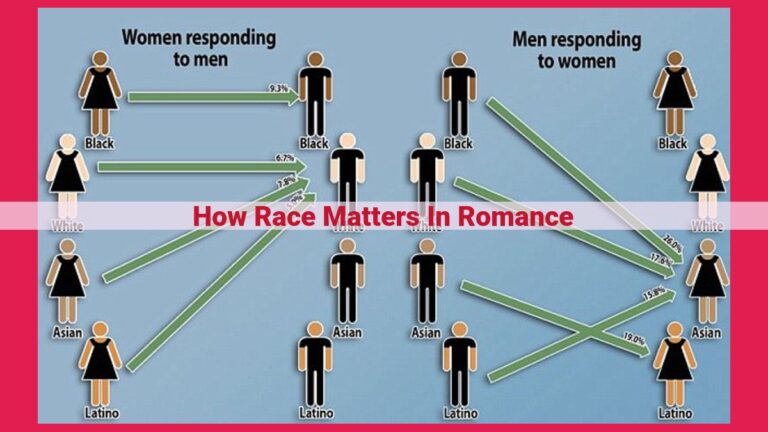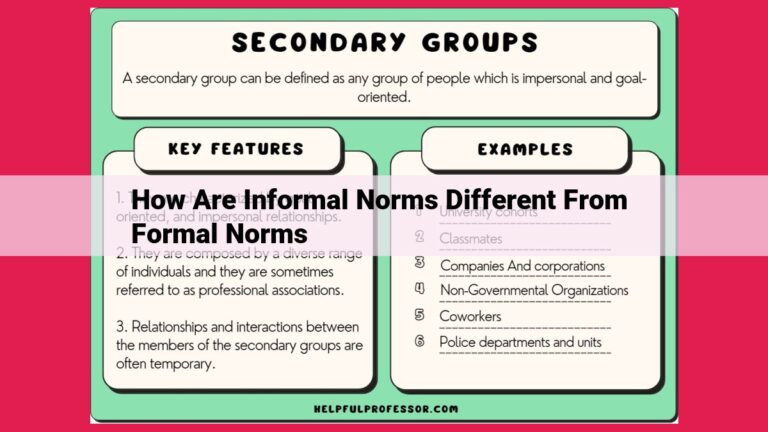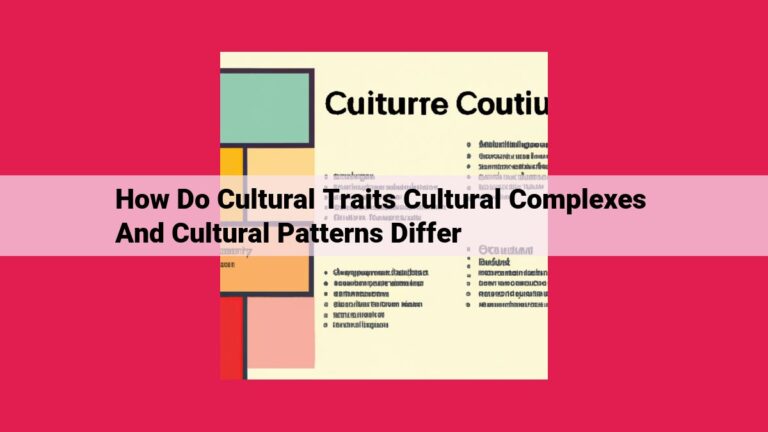Unveiling The Socio-Cultural Impact Of Natural Disasters: A Comprehensive Exploration
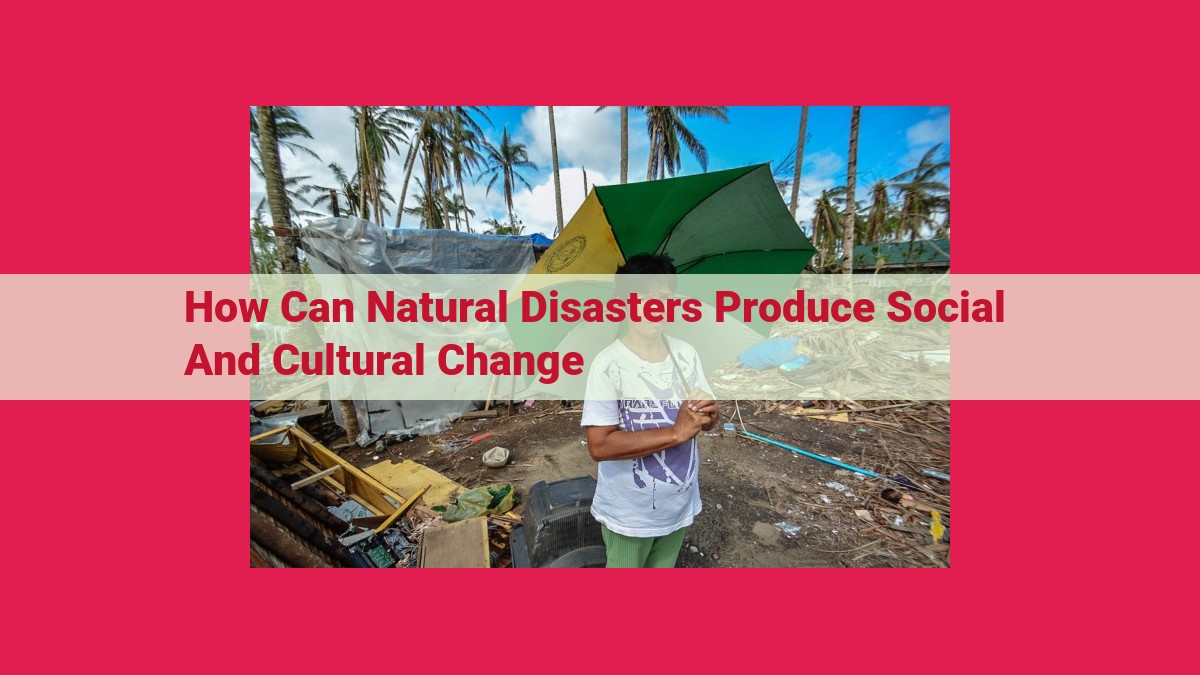
Natural disasters disrupt social norms, form new structures, and trigger existential reassessments, leading to shifts in values and priorities. They foster community cohesion and solidarity but may also erode trust in authorities. Cultural adaptation and innovation occur, but disasters can also result in cultural erasure. Heritage preservation efforts aim to safeguard cultural narratives. Disasters accelerate social changes, raise environmental awareness, and prompt introspection, ultimately shaping communities’ social and cultural identities.
Disrupted Norms: The Social Quakes of Disasters
In the face of unforeseen natural disasters, the tapestry of our lives unravels, revealing threads of fragility and resilience. Social norms, once etched in stone, crumble as communities grapple with the upheaval that befalls them.
The earthquake’s thunderous roar becomes a catalyst for questioning long-held beliefs and values. Traditions that once bound us now seem obsolete in the face of the devastation. Social boundaries blur, and hierarchies are flattened as we come together in a common struggle for survival.
Class distinctions fade as we share the same makeshift shelters, regardless of our former social status. The elderly and the vulnerable find themselves supported by unexpected caregivers, fostering a sense of unity that transcends age and ability.
Disasters force us to confront our mortality and reassess our priorities. The material possessions we once clung to now seem inconsequential compared to the bonds we’ve forged in the aftermath. Community takes on a new meaning as we discover the strength that lies within our collective resolve.
However, this reprioritization can also lead to tension. Power structures are challenged as survivors question the adequacy of their leaders. Trust in institutions may erode, paving the way for social unrest or even conflict.
Yet, amidst the chaos, there’s a glimmer of hope. The adaptive capacity of our communities allows us to reshape our social frameworks to meet the challenges we face. New organizations emerge, dedicated to providing support and rebuilding our lives. Grassroots movements empower survivors to take ownership of their recovery and create a more equitable and resilient society.
Formation of New Structures in the Wake of Natural Disasters
In the aftermath of a natural disaster, the very fabric of society is often torn asunder. Yet, amidst the ruins and upheaval, something remarkable emerges: new structures.
Grassroots Organizations: A Beacon of Hope
As communities grapple with the aftermath, grassroots organizations sprout like wildflowers. Composed of ordinary citizens united by a shared experience, these groups step into the void left by overwhelmed institutions, providing support, supplies, and a glimmer of hope.
Support Systems: A Tapestry of Care
In the wake of a disaster, formal support systems may falter. But from the ashes arise informal support networks. Neighbors check on neighbors, volunteers offer their skills, and community kitchens become a lifeline for the hungry. These networks weave a tapestry of care that binds the community together.
Community Networks: A Pillar of Resilience
Natural disasters have a way of shattering social barriers. As people come together to rebuild, community networks flourish. Shared experiences, mutual aid, and a collective desire to heal strengthen the bonds that unite the community.
In the face of adversity, these new structures emerge as a testament to the resilience and compassion of the human spirit. They provide a foundation upon which communities can rebuild, heal, and move forward together.
Re-Prioritization: Redefining Life’s True Meaning in the Wake of Disaster
Natural disasters, with their raw and unforgiving force, often leave behind not just physical scars but profound emotional ones as well. In the aftermath, individuals and entire communities are thrust into a profound state of introspection and life reassessment.
Shattering the Illusion of Control
Disasters serve as stark reminders of the fragile nature of our lives and the illusion of control we often believe we possess. When everything is stripped away, we’re forced to confront our own mortality and question the fundamental tenets we’ve held dear.
A Time for Re-evaluation
In the face of such adversity, people often find themselves questioning their priorities and goals. What truly matters in life? What brings us joy and purpose? These are the questions that reverberate through their minds.
Adjustments and Shifts
As the dust settles, individuals and communities begin to make profound shifts in their values and aspirations. Material possessions, once seemingly indispensable, pale in significance compared to the importance of human connection and resilience. People may choose to pursue careers that align more closely with their passions, or redefine success in terms of fulfilling relationships and meaningful experiences.
From Trauma to Growth
The process of re-prioritization after a disaster is not without its pain and challenges. But within the depths of adversity, there’s a potential for immense growth and transformation. By questioning their assumptions and redefining their priorities, individuals and communities can emerge from the aftermath stronger, wiser, and more resilient than before.
The Healing Power of Community
In the aftermath of disaster, communities often come together in powerful ways. Shared experiences of loss and hardship create an environment of empathy and support, fostering a sense of belonging and shared purpose. Through collaboration and mutual aid, people find solace and strength in the bonds they forge.
Rebuilding and Renewal
The process of re-prioritization extends beyond individuals to the collective fabric of communities. As they work together to rebuild their homes, businesses, and lives, communities often re-examine their values and aspirations as a whole. This can lead to innovative approaches to urban planning, community development, and environmental sustainability.
Embracing New Perspectives
Disasters can also shatter the rigid social norms and expectations that once confined us. They can create space for new ideas, innovations, and more equitable ways of living. By embracing these new perspectives, communities can emerge from the wreckage with a renewed sense of hope and possibility.
The Legacy of Disaster
The scars of disaster may never fully fade, but the lessons learned and the transformative changes that follow can become a profound legacy. By re-prioritizing our values and rebuilding our lives with purpose and compassion, we can honor the memory of those lost and ensure that their sacrifice was not in vain.
Enhanced Cohesion: Emphasize the sense of unity and support that emerges within communities after a disaster, promoting solidarity, empathy, and collective resilience.
Enhanced Cohesion: A Force That Binds
In the wake of a disaster, the threads that bind communities together are both tested and strengthened. The collective experience of trauma and adversity fosters a remarkable sense of unity. Strangers become allies, neighbors become family, and a spirit of solidarity pervades the air.
This enhanced cohesion is not merely a temporary reaction to the immediate crisis. It often extends far beyond the initial recovery period, becoming an enduring legacy of the disaster. Shared experiences and hardships forge unbreakable bonds, creating a sense of belonging that transcends individual differences.
Empathy becomes the driving force behind community interactions. People who may have once been strangers now share a profound understanding of each other’s struggles and losses. This compassion extends not only to fellow survivors but also to first responders, volunteers, and anyone who lends a helping hand.
Collective resilience is another hallmark of disaster-stricken communities. Faced with unimaginable challenges, people band together to support one another, pooling their resources and sharing their strength. This sense of interdependence fosters a resilient spirit within the community, empowering individuals to overcome obstacles and rebuild their lives together.
Trust Erosion: The Perilous Loss of Faith in Disasters
Natural disasters, with their devastating impact, can shake the very foundations of society. Amidst the chaos and destruction, trust in institutions and authorities can crumble, leaving a void filled with public distrust and social unrest.
Perceived Failures and Inadequate Response:
The failure of governments and relief organizations to effectively respond to the needs of disaster victims can erode trust. Delayed assistance, insufficient resources, and inadequate communication can create the impression that those in power are indifferent or incompetent.
Broken Promises and Broken Hearts:
When officials make promises that go unfulfilled, it chips away at the public’s faith. Broken promises to provide aid, rebuild infrastructure, or prevent future disasters can leave communities feeling betrayed and abandoned.
Selective Assistance and Favoritism:
Disasters often expose disparities in access to resources and aid. Perceived favoritism or lack of assistance for certain groups can breed resentment and distrust towards those responsible for allocating and distributing support.
Public Outcry and Social Unrest:
When trust is lost, it can manifest in public outcry and social unrest. Protests, demonstrations, and even civil disobedience may arise as citizens express their anger and frustration with perceived failures and broken promises.
Consequences of Trust Erosion:
The erosion of trust in institutions and authorities has far-reaching consequences. It undermines the ability of governments to lead and maintain order, hampers the effectiveness of relief efforts, and creates a breeding ground for social division.
Restoring Trust: A Challenge and a Necessity
Rebuilding trust after a disaster is a complex and challenging task. It requires transparency, accountability, and a genuine commitment to addressing the concerns and needs of disaster victims. By actively listening to the public, taking swift action to address shortcomings, and providing timely and effective assistance, governments and relief organizations can begin to rebuild the shattered bonds of trust.
Cultural Adaptation: Ingenuity Amidst Adversity
In the wake of natural disasters, communities often display remarkable resilience by adapting their cultural practices, traditions, and landmarks to cope with the changed circumstances. This cultural adaptation is not merely a coping mechanism; it’s a testament to the ingenuity and creativity of the human spirit.
Take, for example, the aftermath of Hurricane Katrina in New Orleans. The city’s vibrant musical culture became a source of solace and inspiration for its residents. Musicians performed impromptu concerts on street corners, and community singing groups emerged to lift spirits and foster a sense of belonging. These musical expressions not only provided emotional release but also affirmed the city’s cultural identity.
In disaster-stricken areas, cultural landmarks often become symbols of resilience. Damaged buildings are repurposed into community spaces, while destroyed monuments are rebuilt with modern designs that commemorate both the tragedy and the community’s triumph. These tangible reminders of the past serve as anchors of cultural continuity and catalysts for ongoing adaptation.
Cultural adaptation is not without its challenges. Communities must carefully balance the preservation of traditional practices with the need for innovation. This requires a delicate touch, understanding that while some traditions may be lost, the essence of the culture must be preserved. In this way, communities can honor their heritage while also embracing the changes brought about by disaster.
Through cultural adaptation, communities demonstrate their ability to thrive in adversity. By reimagining their traditions and reinventing their landmarks, they weave a new tapestry of cultural expression that connects them to their past while empowering them to face the future.
Cultural Erasure: The Vanishing Tapestry of Tradition
Embracing the Shadow of Loss
Like a thief in the night, disasters can plunder precious cultural artifacts, obliterating the tangible threads that connect us to our past. The ruins of historical landmarks, the silencing of ancestral languages, and the fading embers of time-honored traditions – these are the wounds of cultural erasure.
The Fragility of Memory
When cultural landmarks are reduced to rubble, they carry with them the memories they once held. The stories whispered within ancient walls, the wisdom etched in sacred scripts – these invaluable fragments of our shared history may be lost forever. Like a river dammed, the flow of cultural knowledge is abruptly severed.
The Silenced Voices of Tradition
Languages, like intricate tapestries woven from the threads of history, are also vulnerable to the ravages of disaster. When speakers of indigenous tongues are displaced or silenced, entire linguistic ecosystems vanish. With them goes the wealth of knowledge, customs, and beliefs that were intricately intertwined with their words.
Protecting Our Heritage
Recognizing the profound impact of cultural erasure, communities and organizations are rising up to preserve their cultural legacy. Restoration projects meticulously rebuild damaged landmarks, ensuring that future generations can still marvel at their beauty and historical significance. Indigenous language revitalization programs aim to revive endangered tongues, preserving the wisdom and stories they hold.
Rekindling the Embers of Tradition
Cultural erasure is not merely a loss of artifacts; it is a profound wound inflicted upon the soul of a community. But even amidst the ashes, there is hope. By embracing the storytelling art, we can pass down the memories and traditions that have shaped us. By engaging in cultural practices, we can rekindle the embers of our heritage.
Moving Forward with Remembrance
While the scars of cultural erasure may never fully heal, we can honor the past by cherishing what remains and striving to protect our cultural treasures for generations to come. By remembering the fragility of our cultural heritage, we can forge a path forward that values and safeguards the diverse tapestry of traditions that make our world a vibrant and meaningful place.
Preserving Cultural Heritage: The Imperative Task After Natural Disasters
Natural disasters, while wreaking havoc on communities, also present an opportunity to reflect on the importance of cultural heritage. The destruction of cultural landmarks, traditions, and memories can have profound consequences for a community’s identity and well-being.
In the aftermath of a disaster, efforts to rebuild, restore, and preserve cultural heritage sites become paramount. These efforts are not merely about restoring physical structures but also about safeguarding the cultural narratives, traditions, and knowledge that are embedded in them.
Cultural heritage sites serve as tangible reminders of a community’s history and values. They connect people to their ancestors and provide a sense of continuity and belonging. Preserving these sites ensures that future generations can continue to experience and appreciate their cultural heritage.
One inspiring example is the restoration of the Notre Dame Cathedral in Paris after a devastating fire in 2019. The cathedral is not only an iconic architectural marvel but also a symbol of French culture. The restoration project has involved meticulously repairing the damaged structure while preserving its historical integrity.
Another remarkable instance of cultural heritage preservation occurred after the 2011 Tohoku earthquake in Japan. The tsunami that followed the earthquake caused widespread damage, including to Buddhist temples and traditional wooden buildings. Local communities and volunteers worked tirelessly to salvage and restore these structures, recognizing their cultural and spiritual significance.
Preserving cultural heritage after natural disasters is a collective responsibility. It requires collaboration between governments, cultural institutions, and community members. By documenting, cataloguing, and restoring damaged sites, we ensure that the cultural legacy of our communities is passed on to future generations.
It is through these preservation efforts that we not only honor the past but also secure the future of our cultural identity. Preserving cultural heritage is investing in our collective memory and safeguarding the rich tapestry of human civilization.
Accelerated Social Change: Disasters as Catalysts for Societal Transformation
When disaster strikes, its impact reverberates far beyond the immediate devastation. Disasters have the power to trigger or accelerate profound social changes, reshaping communities and societies in ways that were unimaginable before the catastrophe.
Urbanization:
Following a disaster, mass displacement and population shifts are common occurrences. People may be forced to abandon their homes due to damage or destruction, seeking refuge in urban areas. This influx of displaced individuals can lead to rapid urbanization, as cities struggle to accommodate the sudden surge in population.
Population Displacement:
Disasters can also result in long-term population displacement, where people are unable to return to their homes due to ongoing threats or environmental hazards. This displacement can disrupt communities, break social ties, and create new challenges for individuals and families.
Demographic Shifts:
Major disasters can have a profound impact on demographic shifts, affecting the age distribution, gender ratios, and ethnic composition of communities. For example, a disaster that disproportionately affects a particular age group or demographic can create significant social and economic challenges.
Disasters can also accelerate existing social trends, such as the migration of young people to urban areas in search of opportunity. This can lead to brain drain and a loss of vital human capital in rural and disaster-affected regions.
In the wake of a disaster, communities often experience a surge in social activism, as people come together to rebuild and support those affected. This can lead to the formation of new organizations, advocacy groups, and initiatives focused on addressing the challenges facing the community.
Environmental Awareness:
Disasters can also raise awareness about environmental issues. The widespread destruction and devastation caused by natural disasters can serve as a stark reminder of the importance of environmental stewardship and sustainability. This increased awareness can lead to changes in public policy, corporate behavior, and individual lifestyles.
It is important to remember that while disasters can trigger or accelerate social changes, they also present an opportunity for progress and renewal. By working together, communities can harness the transformative power of disasters to create a more just, resilient, and sustainable future.
Environmental Awareness: Disasters as Catalysts for Change
In the wake of natural disasters, environmental awareness often takes on a heightened significance. The devastation caused by hurricanes, earthquakes, and floods forces us to confront the fragility of our natural world and the consequences of our actions upon it.
Disasters lay bare the interconnectedness of humans and their environment. They expose the vulnerabilities of our infrastructure and the fragility of our ecosystems. By witnessing the destructive power of nature, we are reminded of the importance of sustainability, climate change mitigation, and ecological restoration.
Post-disaster recovery efforts often prioritize the rebuilding of physical structures and infrastructure. However, environmental awareness urges us to consider the restoration of natural habitats and the preservation of biodiversity. Disasters can provide a catalyst for rethinking our relationship with the environment, leading to increased support for renewable energy, green building practices, and conservation efforts.
Moreover, disasters can galvanize communities around shared environmental concerns. The shared experience of a catastrophic event can foster a sense of urgency and collective responsibility to protect the environment. Citizens may become more actively involved in environmental advocacy, and governments may be more receptive to policies that promote sustainability and climate action.
By raising awareness about environmental issues, disasters can pave the way for positive change. They remind us of the interconnectedness of our planet and the importance of stewardship. Whether it’s through the restoration of damaged ecosystems, the adoption of sustainable practices, or increased environmental advocacy, disasters can serve as a wake-up call for humanity to prioritize the protection and preservation of our natural world.

